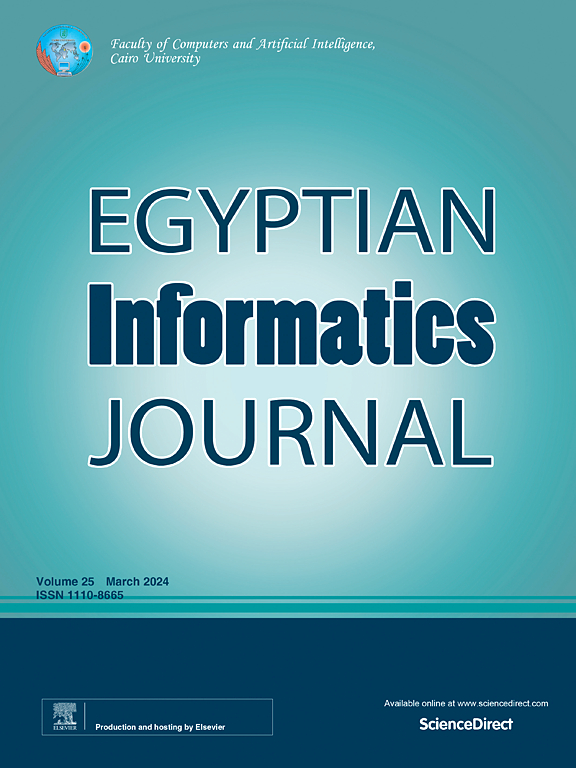基于深度学习和空间计算的智能物联网人机交互界面设计与优化
IF 4.3
3区 计算机科学
Q1 COMPUTER SCIENCE, ARTIFICIAL INTELLIGENCE
引用次数: 0
摘要
智能物联网(IoT)正在改变与智能设备的交互,特别是在家庭环境中,与照明、安全和娱乐系统的交互。为物联网系统设计用户友好的界面存在困难,特别是对于患有严重残疾的个体,如肌萎缩侧索硬化症(ALS)、脊髓损伤和脑瘫。现有的用户界面经常限制个人的能力,特别是那些有严重残疾的人,有效地操作智能家居设备。该研究提出,NeuroSpatialIOT系统通过结合二维空间映射、深度学习和眼动追踪来解决这一问题。该系统的创新方法通过自然的眼睛注视准确地解读用户意图,并根据用户的视角和环境提供相关控制。NeuroSpatialIOT利用深度学习来收集眼球运动、房间的二维空间配置和用户目标的数据。NeuroSpatialIOT的功能是追踪眼球运动,理解房间的二维布局,并利用深度学习来预测用户的意图。然后,系统在用户的视野中显示适当的控件,从而实现与物联网设备的直观交互。对非残疾和严重残疾的人进行的测试得出了积极的结果。非残疾参与者得分为88.9%,残疾参与者得分为91.5%,表明系统可用性很好。随后,正常用户完成任务的时间减少了40%,残疾用户完成任务的时间减少了60%。使用NeuroSpatialIOT,改变室温或照明只需10-15秒,而不是30-45秒。结果表明,该系统可以通过使家庭操作更容易处理,提高各种用户在物联网环境下的自主性和生活质量。本文章由计算机程序翻译,如有差异,请以英文原文为准。
Design and optimization of human-machine interaction interface for the intelligent Internet of Things based on deep learning and spatial computing
The Intelligent Internet of Things (IoT) is transforming interactions with smart devices, especially in a home environment, with lighting, security, and entertainment systems. Designing user-friendly interfaces for IoT systems presents difficulties, particularly for individuals with severe disabilities such as Amyotrophic Lateral Sclerosis (ALS), spinal cord injuries, and cerebral palsy. Existing user interfaces frequently restrict the capacity of individuals, particularly those with severe disabilities, to operate smart home gadgets efficiently. The study proposes that the NeuroSpatialIOT system solve this problem by combining 2D spatial mapping, deep learning, and eye tracking. The system’s innovative approach accurately interprets user intent through natural eye gaze and provides relevant controls based on the user’s viewpoint and environment. NeuroSpatialIOT leverages deep learning to gather data on eye movements, the 2D spatial configuration of the room, and user objectives. NeuroSpatialIOT functions by tracking eye movements, comprehending the room’s 2D layout, and employing deep learning to predict user intentions. The system then displays appropriate controls in the user’s field of view, enabling intuitive interaction with IoT devices. Testing on non-disabled and severely disabled people yielded positive findings. Non-disabled participants scored 88.9% and disabled individuals 91.5%, indicating great system usability. Subsequently took 40% less time for non-impaired users to complete tasks and 60% less for disabled users. With NeuroSpatialIOT, altering room temperature or illumination takes 10–15 s instead of 30–45. The results show that the system can improve autonomy and quality of life for varied users in IoT-enabled settings by making home operations easier to handle.
求助全文
通过发布文献求助,成功后即可免费获取论文全文。
去求助
来源期刊

Egyptian Informatics Journal
Decision Sciences-Management Science and Operations Research
CiteScore
11.10
自引率
1.90%
发文量
59
审稿时长
110 days
期刊介绍:
The Egyptian Informatics Journal is published by the Faculty of Computers and Artificial Intelligence, Cairo University. This Journal provides a forum for the state-of-the-art research and development in the fields of computing, including computer sciences, information technologies, information systems, operations research and decision support. Innovative and not-previously-published work in subjects covered by the Journal is encouraged to be submitted, whether from academic, research or commercial sources.
 求助内容:
求助内容: 应助结果提醒方式:
应助结果提醒方式:


